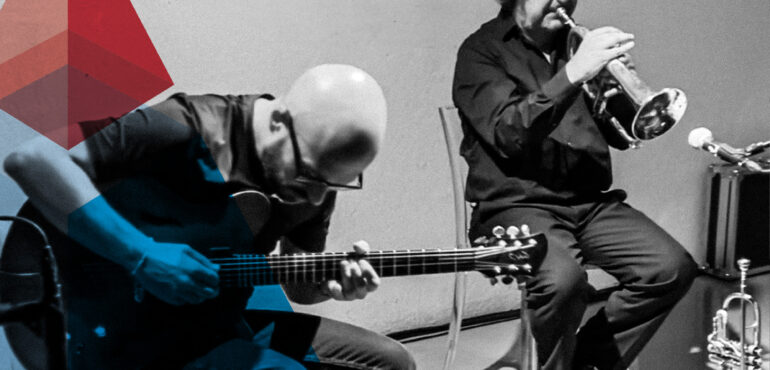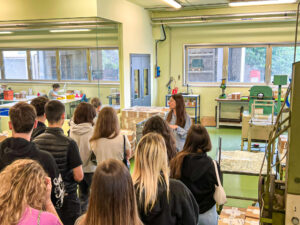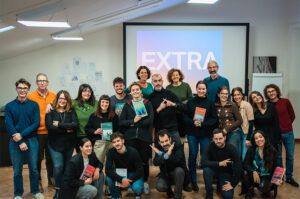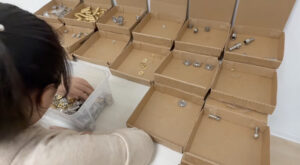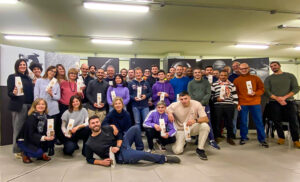Everything Vibrates, in Balance
Our blog features the story by musician Samuele Garofoli on the unusual fusion of music with the sounds of the company
“Metals, Precious. The art of transforming the ordinary into the extraordinary.” This was the theme of the 2022 Integrated Reporting presentation by Paradisi, marking a meeting point between the world of industry and art, between our technicians and the students of the “Edgardo Mannucci” Art High School in Jesi, who transformed common metals like brass and steel into genuine jewels.
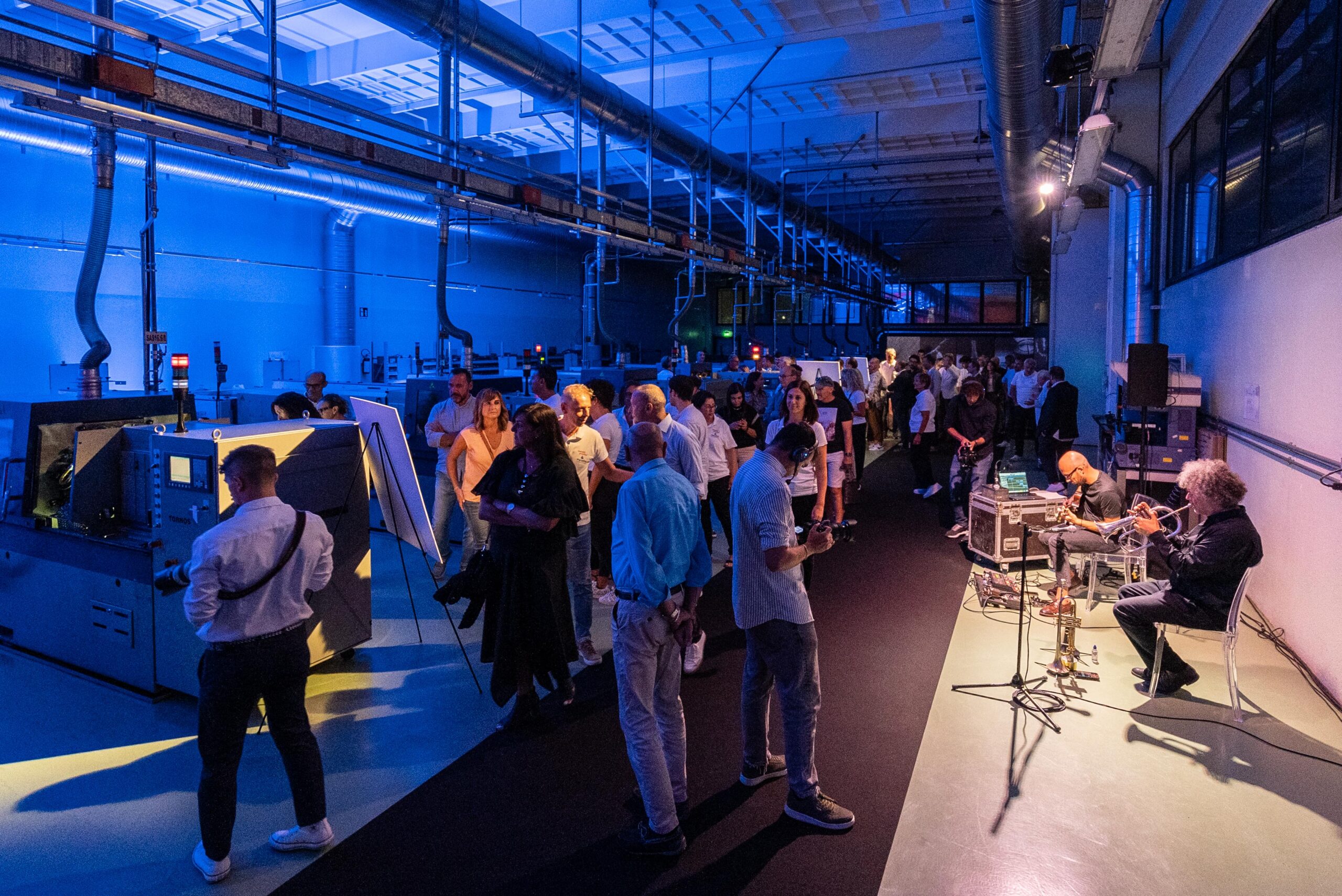
The resulting “Precious Metals” exhibition was made even more evocative by an event featuring musicians Samuele Garofoli and Stefano Coppari, who, playing the trumpet, flugelhorn, and guitar, created an original accompaniment based on sounds “sampled” during the company’s machining activities. This performance of great originality and high caliber represented a “balance between noise and silence, rhythm and melody, man and machine, body and metal. Not a rule, a protocol, a law, a dogma, but a dialogue between elements that seem immutable and absolute yet flow incessantly and never repeat over time”—these are the words with which the musicians described their composition.
“The music for this project,” the artists further explain, “originally comes from observing the processes, the paths of transformation that the balance of man and nature know how to set in motion when they meet. Noise and silence, rhythm and melody, man and machine, body and metal: everything vibrates, in balance.”
The concept of “metals and precious” has highlighted the innovative, creative, and artistic work of the musicians, parallel to that of the students, demonstrating that the true value of things lies in talent, original vision, and the ability to break daily patterns and conventions, never losing sight of the guiding principles of precision and dynamic balance.
Following this insight, we asked Samuele Garofoli to tell us about the journey that led to the unusual blend of worlds, seemingly so far apart.
When we talk about precision in musical work, we have at least two orders of thought to explore, both present in the performance for Paradisi jewels.
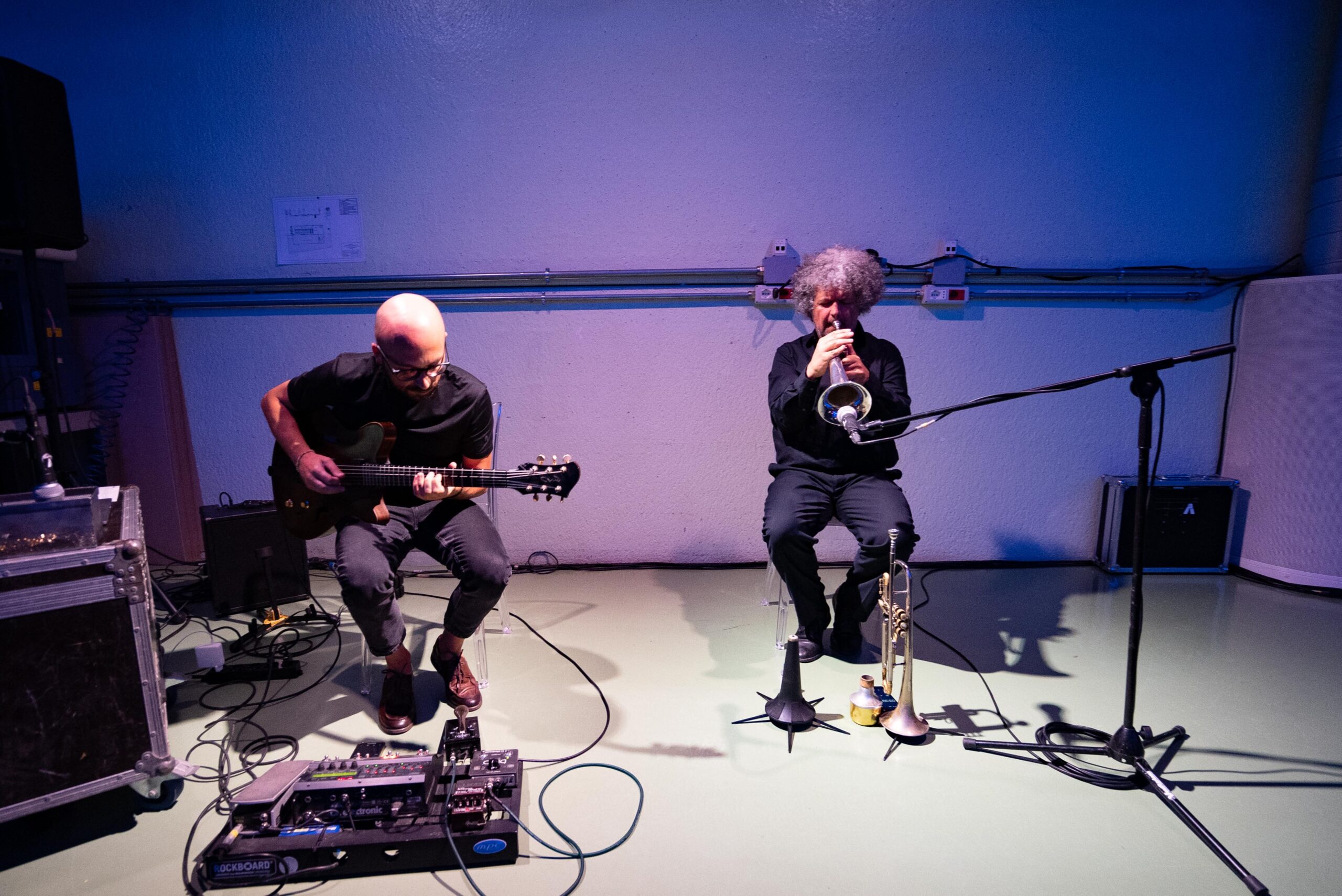
The first essentially concerns the dilemma of what the unit of measure for creativity, ideas, and musical thought is, and, if it ever existed, based on what parameters it might be possible to define (precisely) whether a piece of music is more or less precise. In summary: precise in what and precise for what?
EXECUTION PRECISION
This is the easiest to identify, the one we are culturally accustomed to. Execution precision can be objective and measurable: it mainly concerns intonation and rhythm. Nearly everyone who listens to music notices when a singer is “off-key” or someone is “out of rhythm.” Our brain is naturally attuned to listening and capable of perceiving the relationships between sounds and rhythms, and understanding whether the music works in all these aspects.
EMOTIONAL PRECISION
When talking about creativity, ideas, thought, and music, paradoxically, precision is as valuable as imprecision simply because the feelings elicited by works identified with certain precision suggest emotions, while those in front of works showing no particular precision evoke different feelings.
Thus, in our case, there exists at least another meaning of the term precision that does not involve measurability but refers to the choice of sounds suitable for conveying certain feelings or emotions.
Here the discussion becomes particularly interesting because the term precision is not tied to technical aspects such as intonation, rhythm, execution but to the ability of certain music to suggest “precisely” emotions, impressions, nuances of our being that we could hardly express in words.
This is the true role of music, which should be interpreted with extreme attention and determines the quality of the artwork and its intrinsic dramatic and narrative capacity.
In the Paradisi performance, we tried to tell what we felt when the project was explained to us, when we saw the machines that shape metal appreciating the results, and especially when we spoke with the people who oversee and “inspire” all the production processes.
We imagined the work that comes before, during, and after, the courage to face a challenge, the pride in succeeding, the humility to start all over again every time.
To do this, we also got help from the company’s machines: we recorded the sounds they emitted, felt awe, enthusiasm in listening to them, and trying to understand the cycles with which they presented themselves in various stages of processing. Then we suddenly realized the pride and love with which the production processes were described to us by everyone we met, and here empathy defined the terms of our musical narrative.
Per questo sono state usate sia la tecnica dell’improvvisazione, imprecisa per natura, che musiche appositamente composte, oltre a una base creata a partire dai suoni dei macchinari precedentemente registrati.
For this, we used both the technique of improvisation, imprecise by nature, and specially composed music, along with a base created from the sounds of the machinery previously recorded.
The structure of our composition starts from the first thing that struck us, the noises of the machines. With our instruments, we mimicked the sounds interacting with their recording, but then humanity took shape with a first melody representing the work and human contribution, and then a second melody we created thinking of the pride of man upon achieving results. In conclusion, the return to the noises should be interpreted as starting the whole process over again for a new job and more pride.
La struttura della nostra composizione parte dalla prima cosa che ci ha colpito, i rumori delle macchine. Con i nostri strumenti ne abbiamo imitato i suoni interagendo con la loro registrazione ma poi l’umanità ha preso forma con una prima melodia che voleva rappresentare il lavoro e l’apporto umano e poi una seconda melodia che abbiamo creato pensando proprio all’orgoglio dell’uomo al raggiungimento dei risultati. In chiusura, il ritorno ai rumori va interpretato come il ricominciare volta per volta tutto il processo per un nuovo lavoro e altro orgoglio.
A narrative of our emotions. And if someone liked our music, it’s because we touched some intimate chords. With precision.
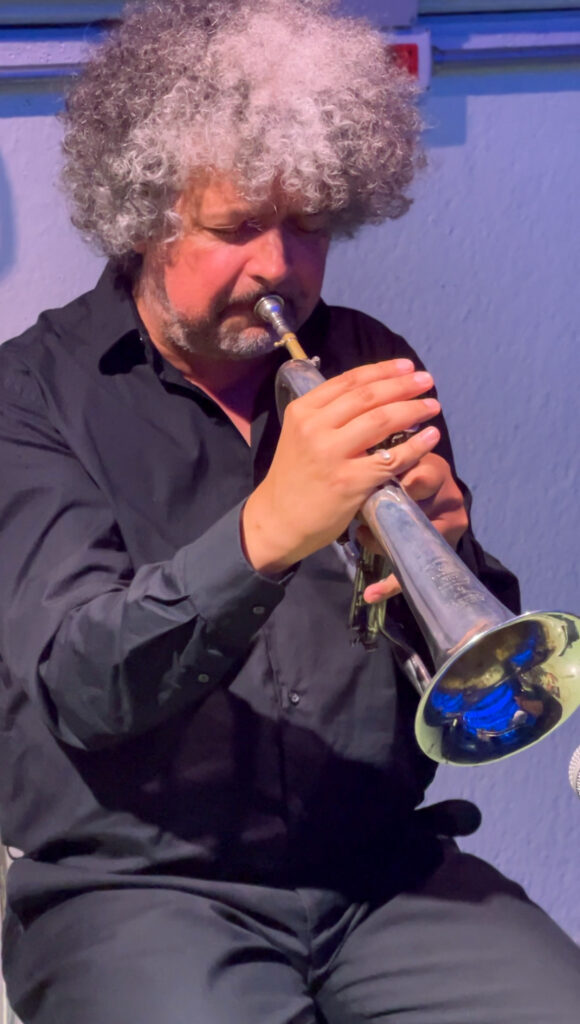
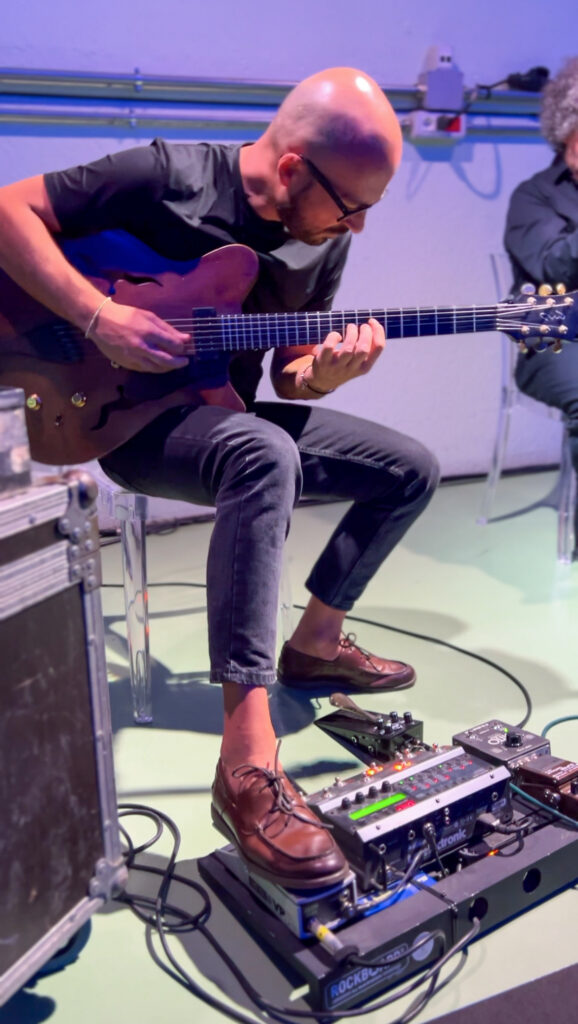
Listen to the musical performance
